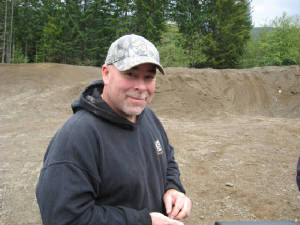Bigfoot injured by a forest fire was taken away and hidden by the authorities, not even Robert Lindsay can top this story
This story was circulating the internet way back in 2004, or maybe as far back as 1999. Back when everybody was on 56k dial-up modems and a "Facebook" was just a regular book with directory listing of names and headshots. This story was so disturbing and so shocking that nobody believed it at the time. It was the Robert Lindsay " Bear Hunter: Two Bigfoots Shot and DNA Samples Taken " story of the time. And like Robert's Bear Hunter story , this witness didn't have a name. The only thing known about the witness is that this person was a government employee, anonymous of course. The author of the story was a science teacher named Thom Powell who believe it really happened and that the whole story was an elaborate cover-up. Powell said the anonymous government employee alerted the BFRO about a 7.5 feet long/tall burn victim with "multiple burns on hands, feet, legs and body; some 2nd and 3rd degree burns". Sadly, there was no DNA samples taken from...




Joe, do you get a hard on when you see a bigfoot sculpture?
ReplyDeleteHardly looks like Dogman.
Deletedid you get a hard on when writing that drivelous stupidity piece of rubbish while sitting in your undies while eating your cheetos ?
Deleteyour wanker must be orange mate !
and to answer your question
no !
now bugger off kindly
Joe
Autism - Symptoms
ReplyDeleteCore symptoms
The severity of symptoms varies greatly, but all people with autism have some core symptoms in the areas of:
Social interactions and relationships. Symptoms may include:
Significant problems developing nonverbal communication skills, such as eye-to-eye gazing, facial expressions, and body posture.
Failure to establish friendships with children the same age.
Lack of interest in sharing enjoyment, interests, or achievements with other people.
Lack of empathy. People with autism may have difficulty understanding another person's feelings, such as pain or sorrow.
Verbal and nonverbal communication. Symptoms may include:
DeleteDelay in, or lack of, learning to talk. As many as 40% of people with autism never speak.1
Problems taking steps to start a conversation. Also, people with autism have difficulties continuing a conversation after it has begun.
Stereotyped and repetitive use of language. People with autism often repeat over and over a phrase they have heard previously (echolalia).
Difficulty understanding their listener's perspective. For example, a person with autism may not understand that someone is using humor. They may interpret the communication word for word and fail to catch the implied meaning.
Limited interests in activities or play. Symptoms may include:
DeleteAn unusual focus on pieces. Younger children with autism often focus on parts of toys, such as the wheels on a car, rather than playing with the entire toy.
Preoccupation with certain topics. For example, older children and adults may be fascinated by video games, trading cards, or license plates.
A need for sameness and routines. For example, a child with autism may always need to eat bread before salad and insist on driving the same route every day to school.
Stereotyped behaviors. These may include body rocking and hand flapping.
Hi Chunk Chunk!
DeleteSymptoms in adulthood
DeleteSome adults with autism are able to work and live on their own. The degree to which an adult with autism can lead an independent life is related to intelligence and ability to communicate. At least 33% are able to achieve at least partial independence.2
Some adults with autism need a lot of assistance, especially those with low intelligence who are unable to speak. Part- or full-time supervision can be provided by residential treatment programs. At the other end of the spectrum, adults with high-functioning autism are often successful in their professions and able to live independently, although they typically continue to have some difficulties relating to other people. These individuals usually have average to above-average intelligence.
Other conditions
DeleteAutism is one of several types of autism spectrum disorders (ASDs), once known as pervasive developmental disorders. It is not unusual for autism to be confused with other ASDs, such as Asperger's syndrome, or to have overlapping symptoms. A similar condition is called unspecified neurodevelopmental disorder. This condition occurs when children display similar behaviors but do not meet the criteria for autism. Also, other conditions with similar symptoms may also have similarities to or occur with autism.
Hey, high functioning autism gives you above-average intelligence.
DeleteThanks, autism!